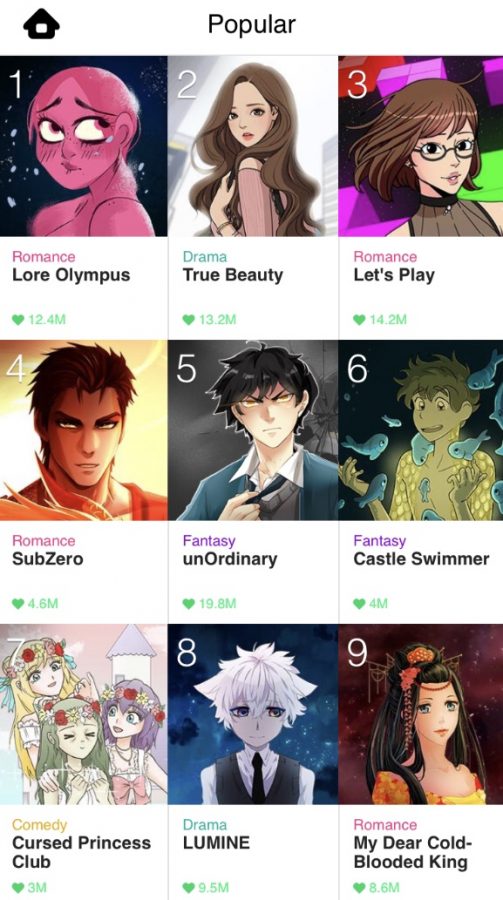LINE Webtoon: A Summary
Shown are some of LINE’s most popular webtoons, ranked by number of subscribers and likes.
December 1, 2019
It is a common complaint that people spend too much time on their phones. Oftentimes they choose to spend that time surfing social media, doing homework, or simply browsing the internet. For many, though, a significant portion of their screen time is spent reading webcomics.
“Webcomics” is a rather vague term that, according to The Comics Journal, refers to any comic “created for and published/released on a computer platform.” The concept of digital comics was first conceived by webcomic creator Scott McCloud. McCloud attested to the obvious benefits of a digital platform: easy distribution, environmental sustainability, and an “infinite canvas” of media potential.
These benefits fueled the growing popularity of webcomics, and as it became more prevalent, it picked up a few synonymous terms. Digital comics, online comics, and internet comics are all interchangeable with webcomics; there is no real distinction between them. However, webcomics are not to be confused with webtoons.
“Webtoons” (a portmanteau of web and cartoon) is a term that originated in Korea. It possesses similar attributes to other digital comics, such as minimal dialogue and a heavy emphasis on imagery. There are distinct characteristics of webtoon specifically, such as scrolling down to read vertically. Lately, comics have begun incorporating “FX Toons,” a webtoon-exclusive feature that triggers sounds, animation, or vibrations that enhance the reading experience.
Webtoons are becoming especially distinctive with the launch of the LINE Webtoons app in 2004. LINE was created by JunKoo Kim, to engage the failing comics industry in South Korea. Kim said that “there weren’t any series coming out… There were no big hits and there weren’t any comics I could read.” Kim wished for the comics to be easily accessible. So LINE Webtoons boasts the benefits of any other digital platform, with an added bonus- all content is free.
With free content, one may wonder how artists are compensated for their work. LINE is an open source platform, and any artist is free to post their comics on the Discover feature. However, only a select number of artists are paid, with compensation varying by update frequency, length of comics, and number of subscribers. Individuals can receive thousands of dollars per chapter, with revenue generated by a patron system. The comics of paid creators are considered “Featured,” and the title is promoted by the app. Bella Saucedo (9) says this system “gives artists a way to show their work… and inspires others to make their own stories.”
The setup was an instant success in Asia, so much so that Kim decided to share the app with Western markets. In the summer of 2014, LINE Webtoons became available in North America. Since then it has grown tremendously, with a 300% year to year growth rate and over 10 million daily readers in the United States alone. Such growth is fueled by the sometimes obsessive enthusiasm of readers like Bella Saucedo (9), who says simply, “I love webtoon.”





































